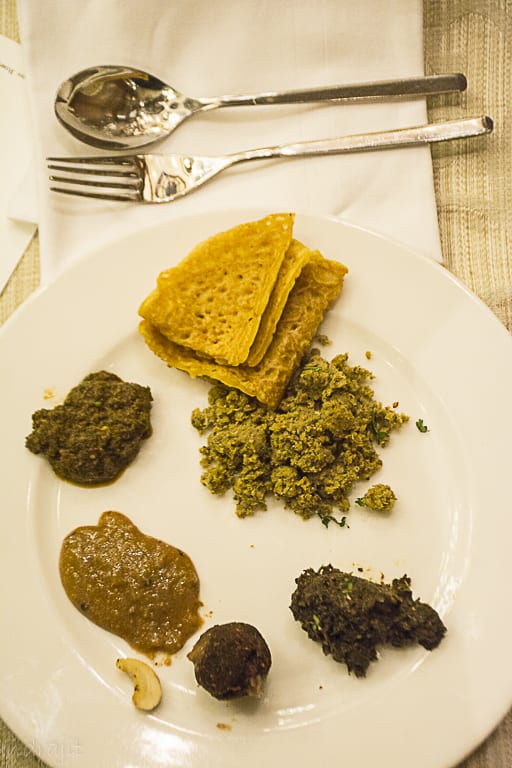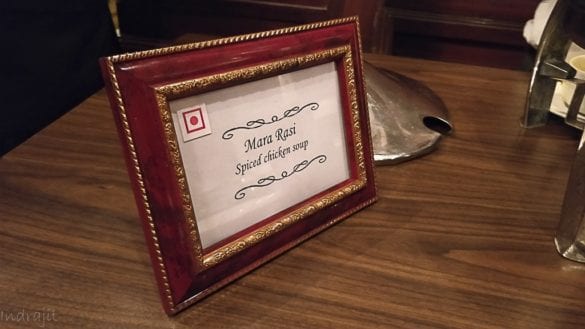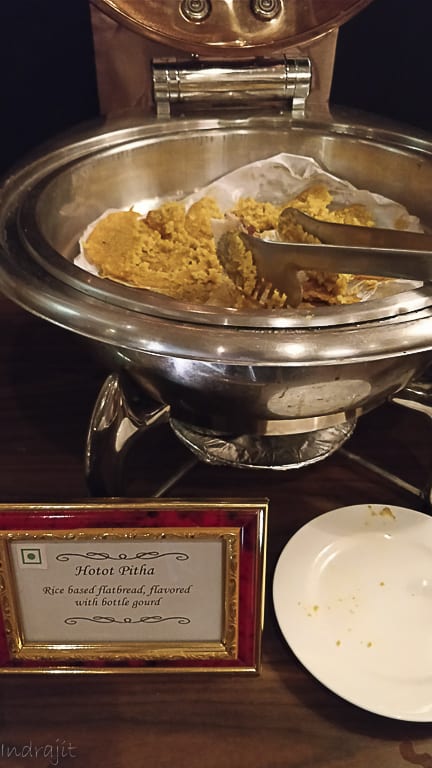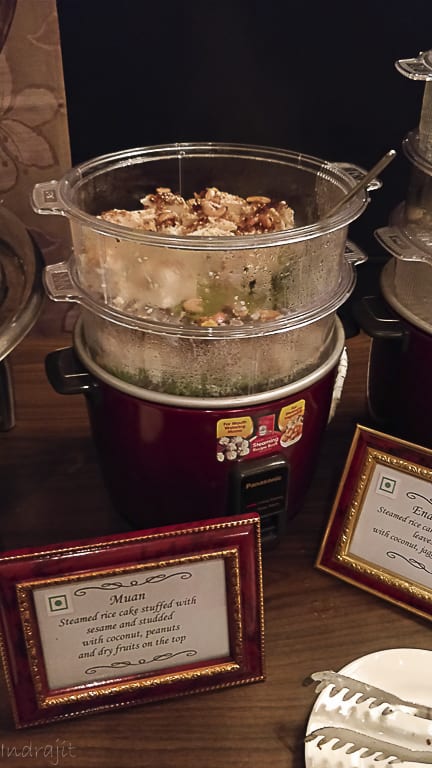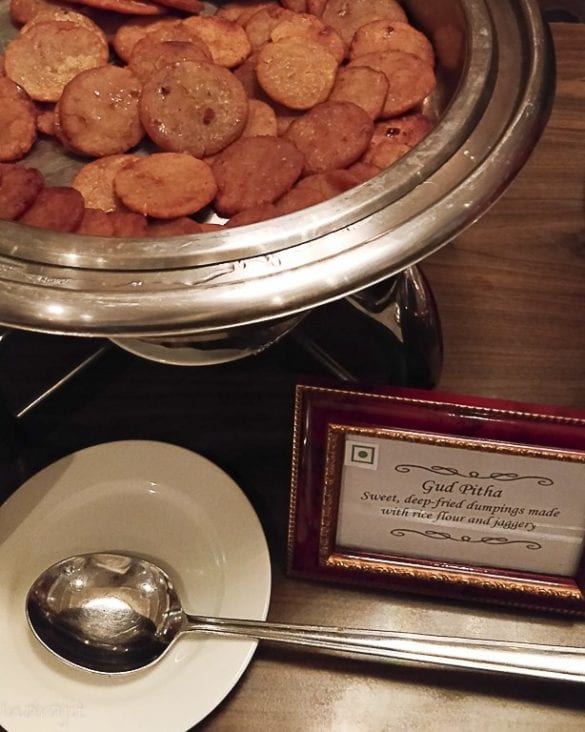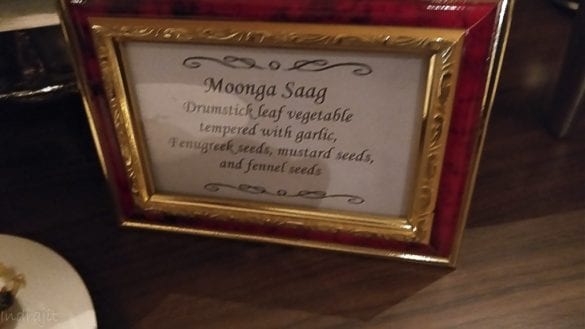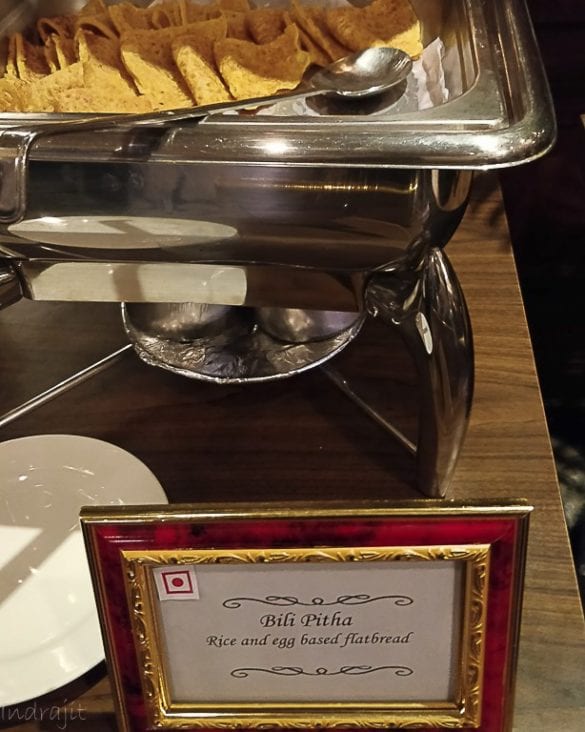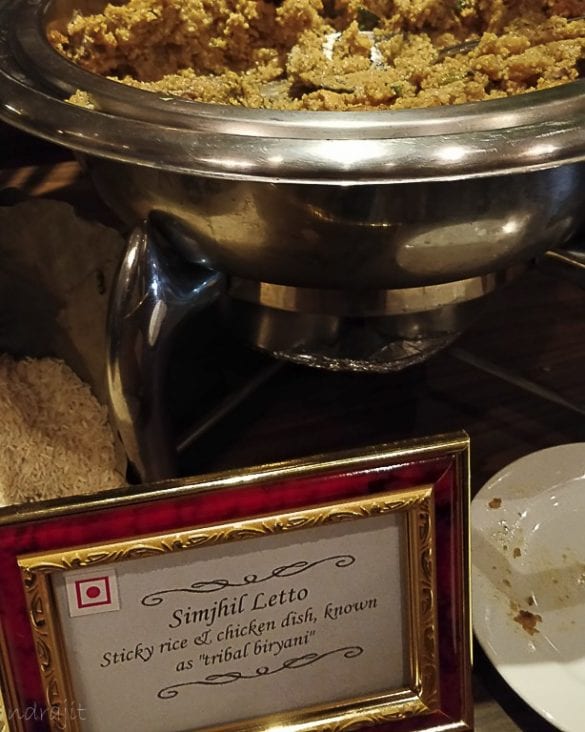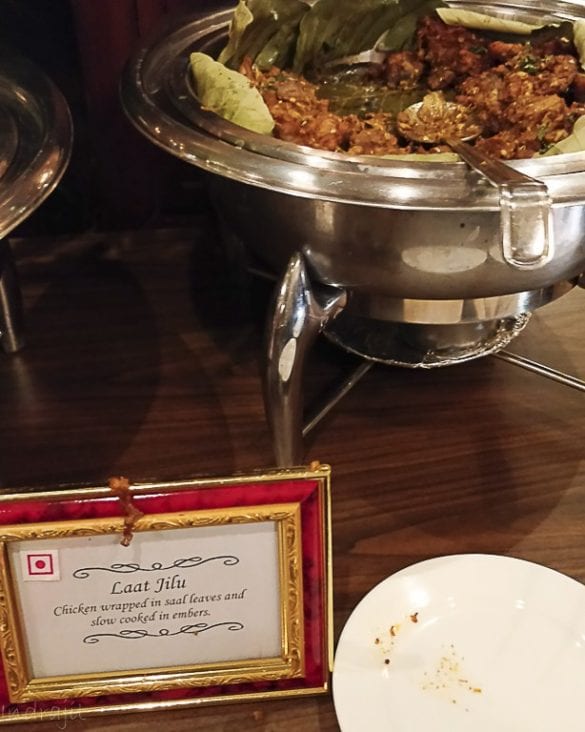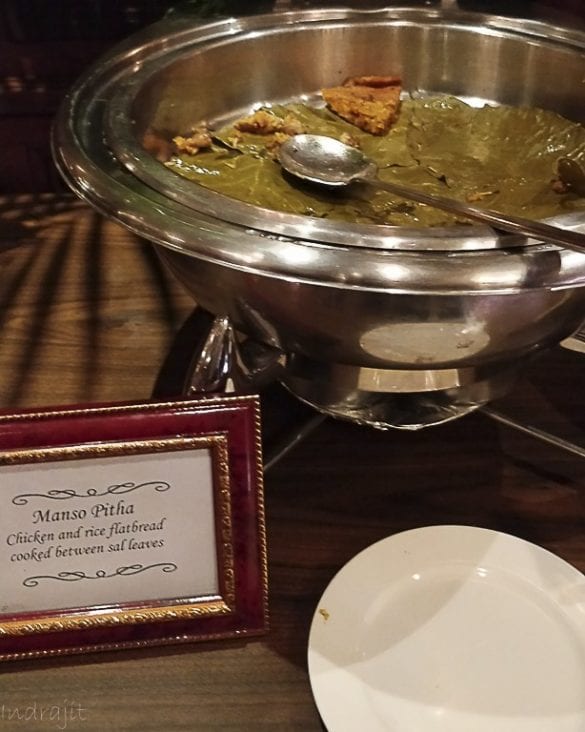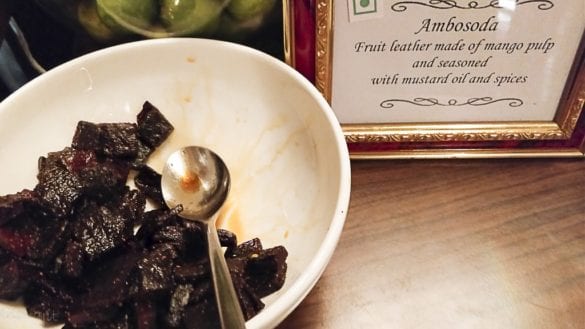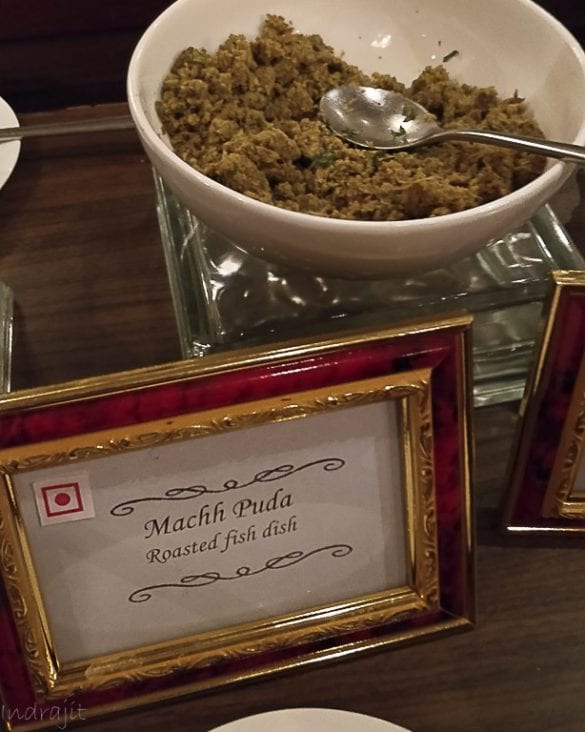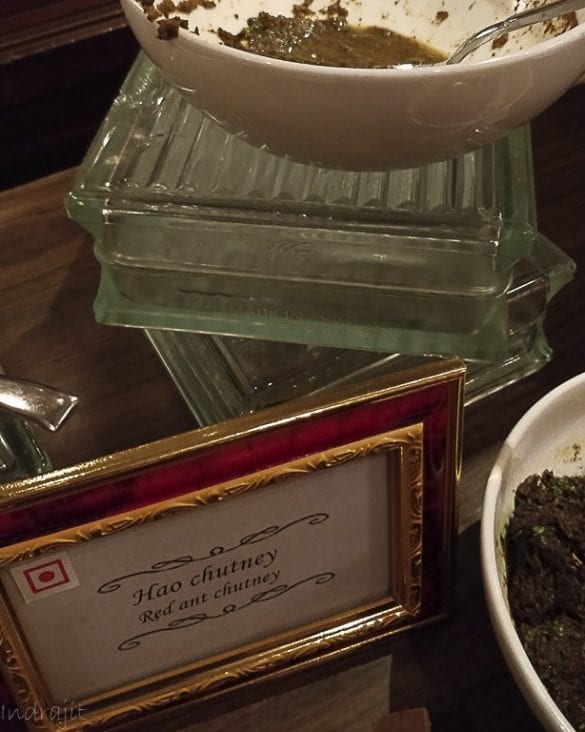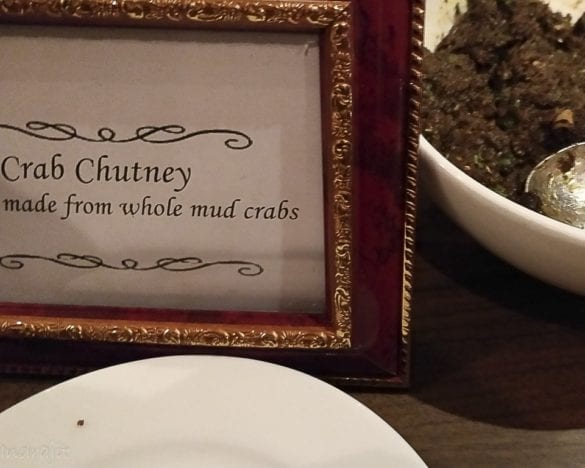Somehow, I am not a rustic person. That “mera gaon mera desh” wala feelings somehow never come to me. For a couple of days, leaving the hustle and bustle of city life is fine, but saying in a rustic environment simply freaks me out. Tribal food, that typical tribal food, however has been simply a mystery for me on my entire life. In Arunachal Pradesh and in few states of north-east, I’ve tasted some exotic meat varieties, but east Indian tribal cuisine ? Nope …..
So, when this invitation came from Taj Bengal, to attend their Samvad 2017, I was ready. Tata Steel believes that private enterprise exists not for the sake of generating wealth for a few. But is directly responsible for the well-being and happiness of society as a whole. Tata Steel’s CSR focuses on improving people’s lives through initiatives in education, health, livelihoods, sports and ethnicity. A significant proportion of people residing in Tata Steel’s operational areas are from the numerous tribes indigenous to Jharkhand and Odisha. And a number of initiatives of our CSR focus on empowering these communities. One such initiative is ‘Samvaad’.
For more details on Samvad, you can click here: Samvaad over the years
For the short movie on Samvad 2016, please click here- taken from Tata Group
Now, this year, special focus of Samvad was showcasing its tribal cuisine. Women from across 3 states, namely Orissa, Jharkhand and West Bengal were selected by the state representative and they came down to work in the Taj Bengal kitchen and showcase their food. And this is a chance, only a mad person would let go.
A presentation on activities of Samvad was shown followed by a small dance performance, before the lunch was served.
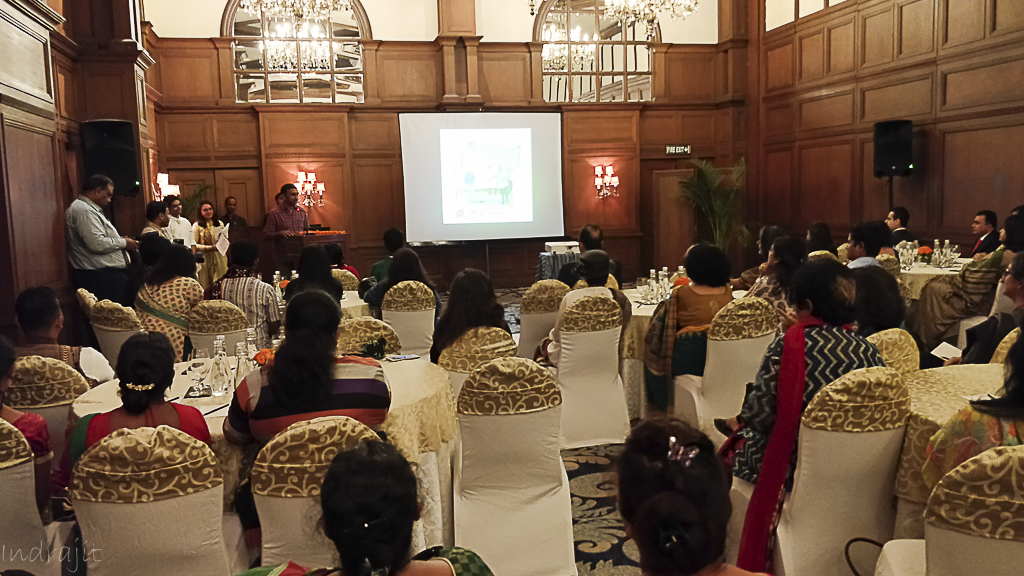

Frankly, I can not remember the dish names, at least all of them and from the large spread, as much as my mind wanted, body denied tasting all. So, for a change, I acted intelligently and took pictures of the dish names. Off course, I’ll go into my experience on tasting the individual dishes, but till then, knowing the full menu won’t hurt.
| Dish | Tribe | State | Description |
| Laat Jilu | Santhal | Odisha/Jharkhand | Chicken wrapped in saal leaves and slow cooked in embers. |
| Simjil Leto | Sticky rice & chicken dish, known as “tribal biryani” | ||
| Oal Chutney | Chutney made from ‘elephant’s foot’ yam | ||
| Hao chutney | Red ant chutney | ||
| Bili Pitha/Anda Pitha | Rice and egg based flatbread | ||
| Matkom Lathe | |||
| Hotot Pitha/Lau Pitha | Rice based flatbread, flavoured with bottle gourd | ||
| Muan Pitha | Sabar | Odisha | Steamed rice cake stuffed with sesame and studded with coconut, peanuts and dry fruits on the top |
| Ambosoda | Fruit leather made of mango pulp and seasoned with mustard oil and spices | ||
| Enduri Pitha | Steamed rice cake cooked in turmeric leaves stuffed with coconut, jaggery and dry fruits | ||
| Moonga Saag | Drumstick leaf vegetable tempered with garlic, fenugreek seeds, mustard seeds, and fennel seeds | ||
| Gud Pitha | Kora | West Bengal | Sweet, deep-fried dumpings made with rice flour and jaggery |
| Mara Rasi | Spiced chicken soup | ||
| Khola Pitha | Lightly sweetened rice pancakes | ||
| Crab Chutney | Chutney made from whole mud crabs | ||
| Manso Pitha | Lodha | Chicken and rice flatbread cooked between sal leaves | |
| Sora Pitha | Savoury rice pancake | ||
| Saag | Rice pancake with a vegetable dish made with 9 local, leafy vegetables | ||
| Machh Puda | Roasted fish chutney |
The first dish that I tasted, was the soup. It was called Mara Rasi- a spicy chicken soup. A spoon inside my mouth and I suddenly was taken back by around three decades. My mother used to make me a spicy soup in my childhood- it used to be a clear soup- more like a jhol- a light textured, spicy jhol- mangsher jhol- but spicy in nature. My mom didn’t strive for making the thing perfect- never, neither texture-wise, nor color-wise. But, what she tried, is to prepare it in such a way that I would love it and steadily she excelled in that. This love, somehow, differentiates great food from good food and this soup just set the tone for this tribal lunch.
Next was an array of chutneys and the prime point of interest was the Hao chutney or, red ant chutney. Its supposedly made by crushing red ants to a paste and putting in spices in it. The taste was pungent (and I am not very sure whether I am correctly describing it or not) but the smell of meat was evident and flavor of chilly and garlic was there. Somehow, I liked the crab chutney. Whole mud crabs were made into a paste and cooked probably with raw mustard oil. It was strong, very strong flavored and heavenly. I personally used the Bili Pitha (rice and egg based flatbread) as an accompaniment to these chutneys. The Machh Puda from Orissa was more like our homely bele machher jhuri, only roasted and dry. Smell of mustard oil again was evident. And, now, I was seriously missing my Old Monk. There was Mahua Bara (made from Mahua and frankly, I didn’t like the taste. A large sip of Mahua (the drinks ) at night and enjoying the raw smell of your tribal lover is something that this bada or pakora couldn’t match.
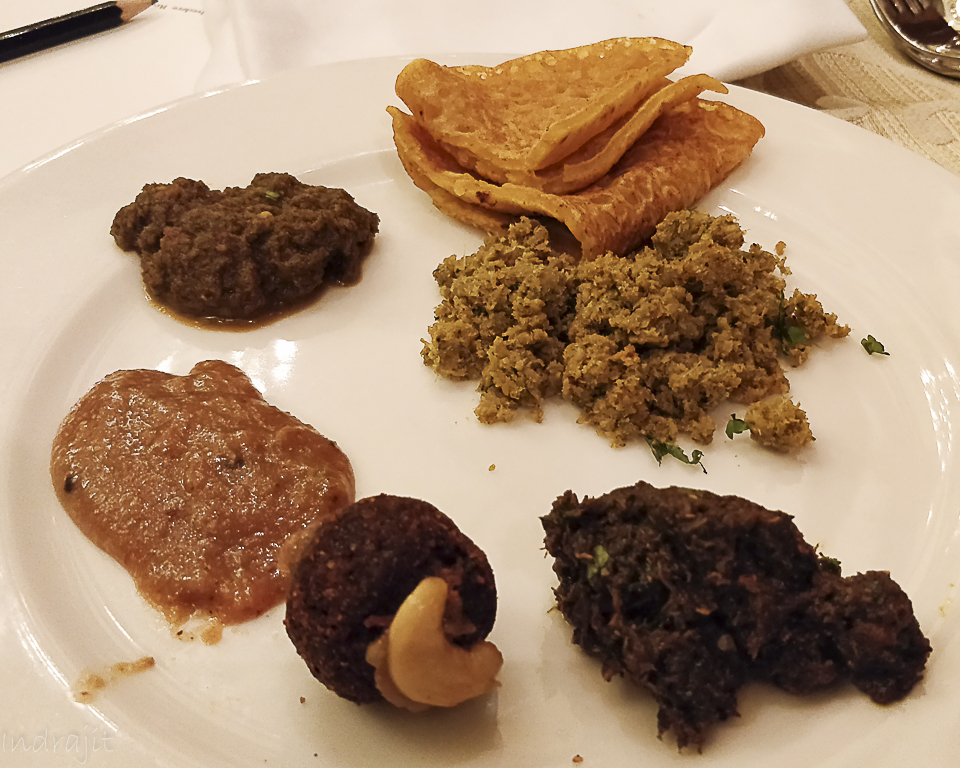
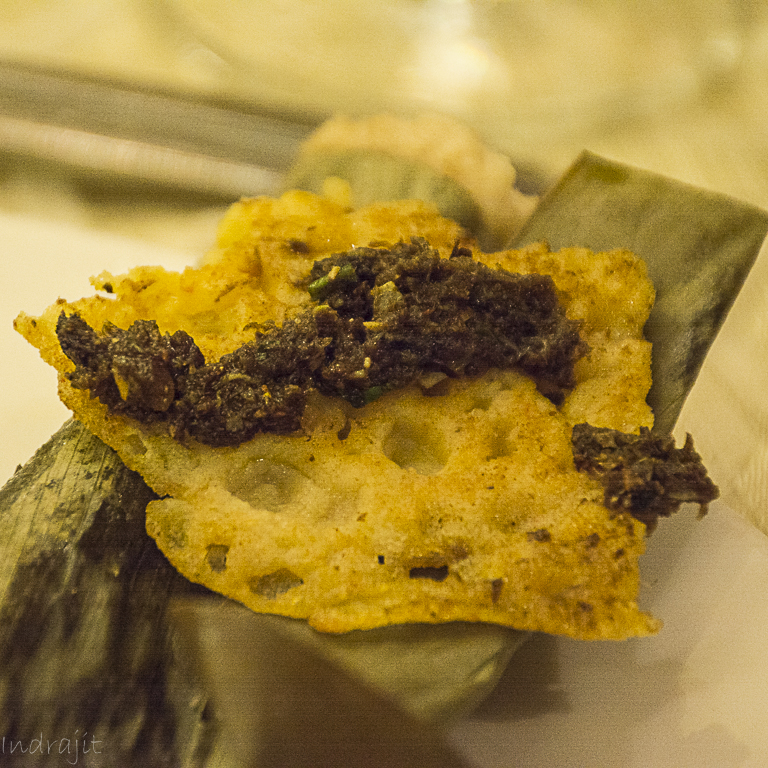
Next was Muan, a steamed rice cake with the stuffing o of coconuts and peanuts and topped with dry fruits. This was followed by Enduri Pitha. Again, another rice cake (wrapped in tamarind leaves) stuffed with coconut, jagery and dry fruit. Where, enduri pitha had a much distinct taste, muan won simply due to its simplicity. Or am I biased ? Not sure.
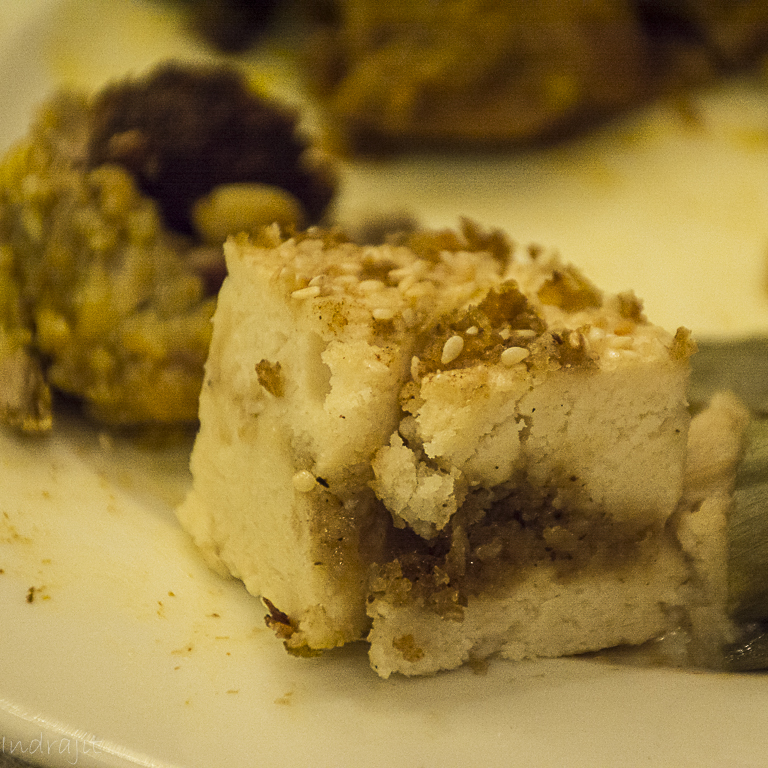
Muan
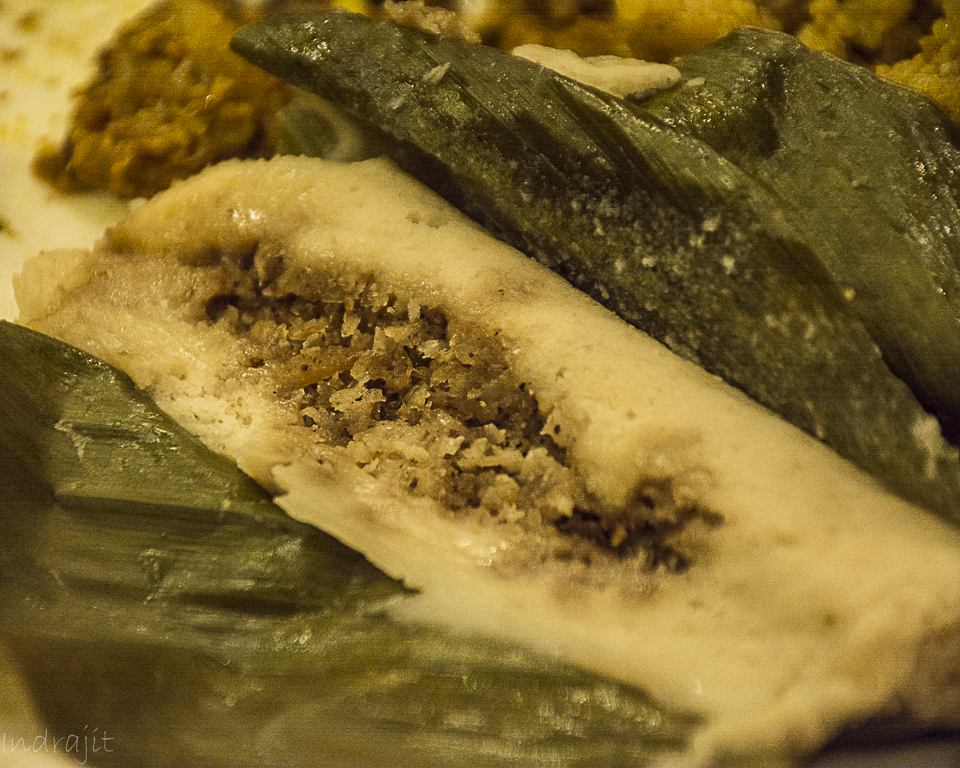
Enduri Pitha
And, finally, its time for the big boys, my lingo for the non-veg items. First one was the best, as per me. It was called Simjhil Letto, basically sticky rice with chicken and god knows why, called as tribal biryani. It was nothing like a biryani. But, when my mom used to overcook the home-styled chicken pulao and rice became soggy and sticky, it was exactly the same thing. Mom used to be ashamed and my father used to console her saying “it’s okay, the taste is still fine” . It was just that. The taste was brilliant, lots of chicken pieces (how I would have loved them to be those country chickens) and tasty soggy rice with that homely smell.
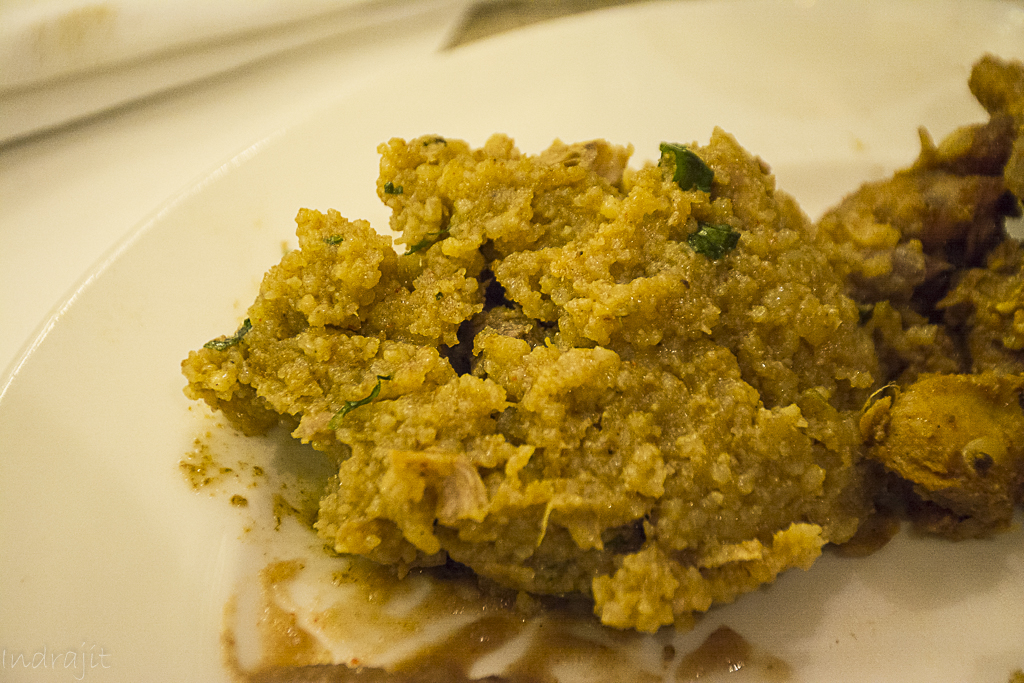
Simjhil Letto, basically sticky rice with chicken
Mangsho pitha couldn’t impress me. It was chicken and rice flatbread cooked in shaal leaves. Somehow, the aroma of shaal leaves was not present. But but but, the Laat Jilu (chicken wrapped in shaal leaves and slow cooked in ember) made up for it. It simply blown me away. almost an oli-free dish, chicken was perfectly cooked and taste was complementing almost anything. A jungle-like aroma was making love to it and not having Old Monk with it is a sin.
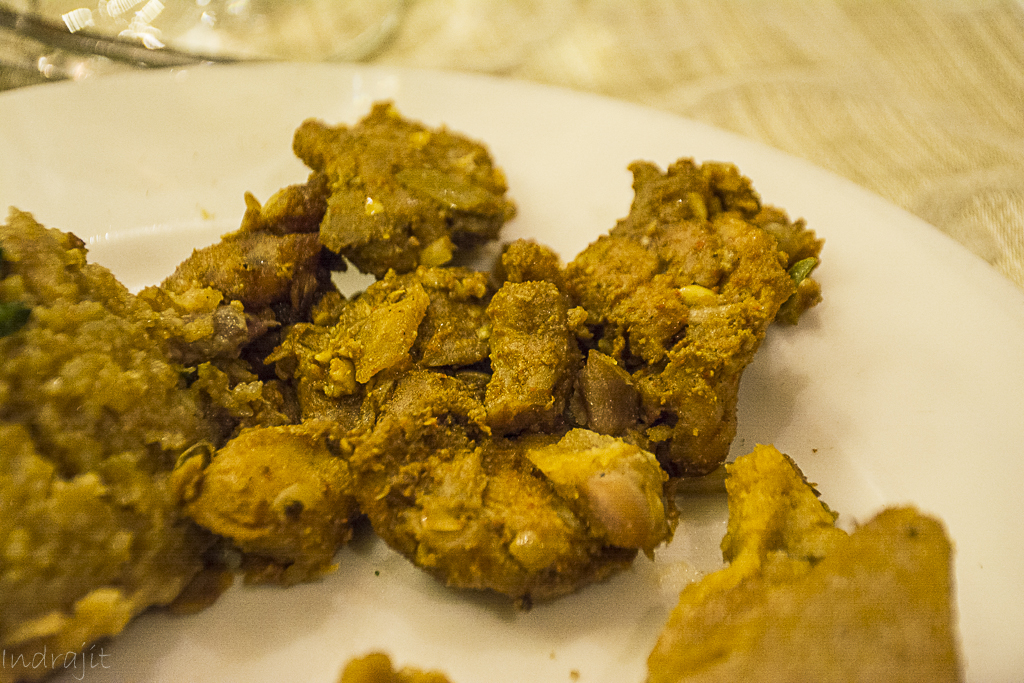
Laat Jilu

Mansho Pitha
I didn’t search for the sweet dish and why the hell should I, when there is Ambosoda. It’s basically an Amsatta (fruit lather with mango pulp and strong aftertaste of mustard oil). The perfect finisher.

It was like tasting my mother’s cooking, where the cooking is not done to please a customer. It’s done to feed the family and that love was evident. I sincerely hope, someday few of these dishes make it to the regular menu. I am not very sure, if the commercial production can retain the original flavor, but let’s hope for the best.
Bon apetit !!!
Comments and critics welcome.
I can be reached at 9903528225 / indrajit.lahiri@ymail.com
